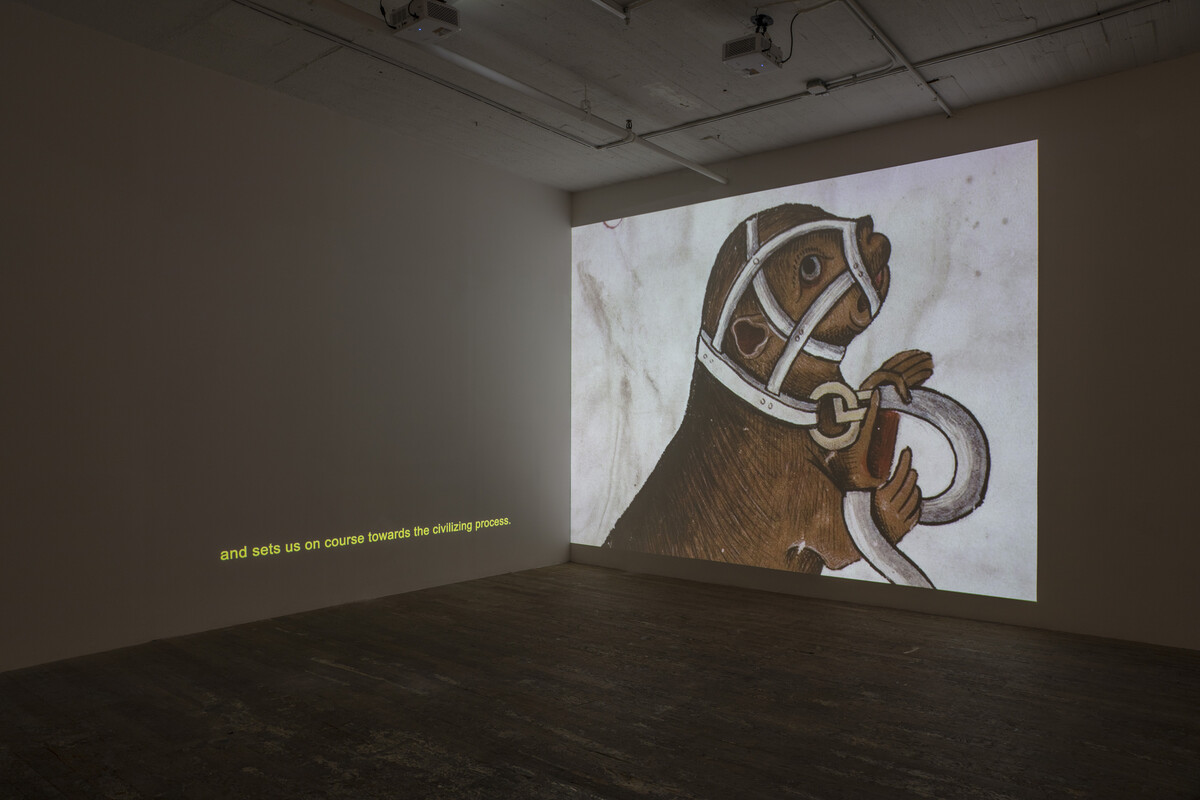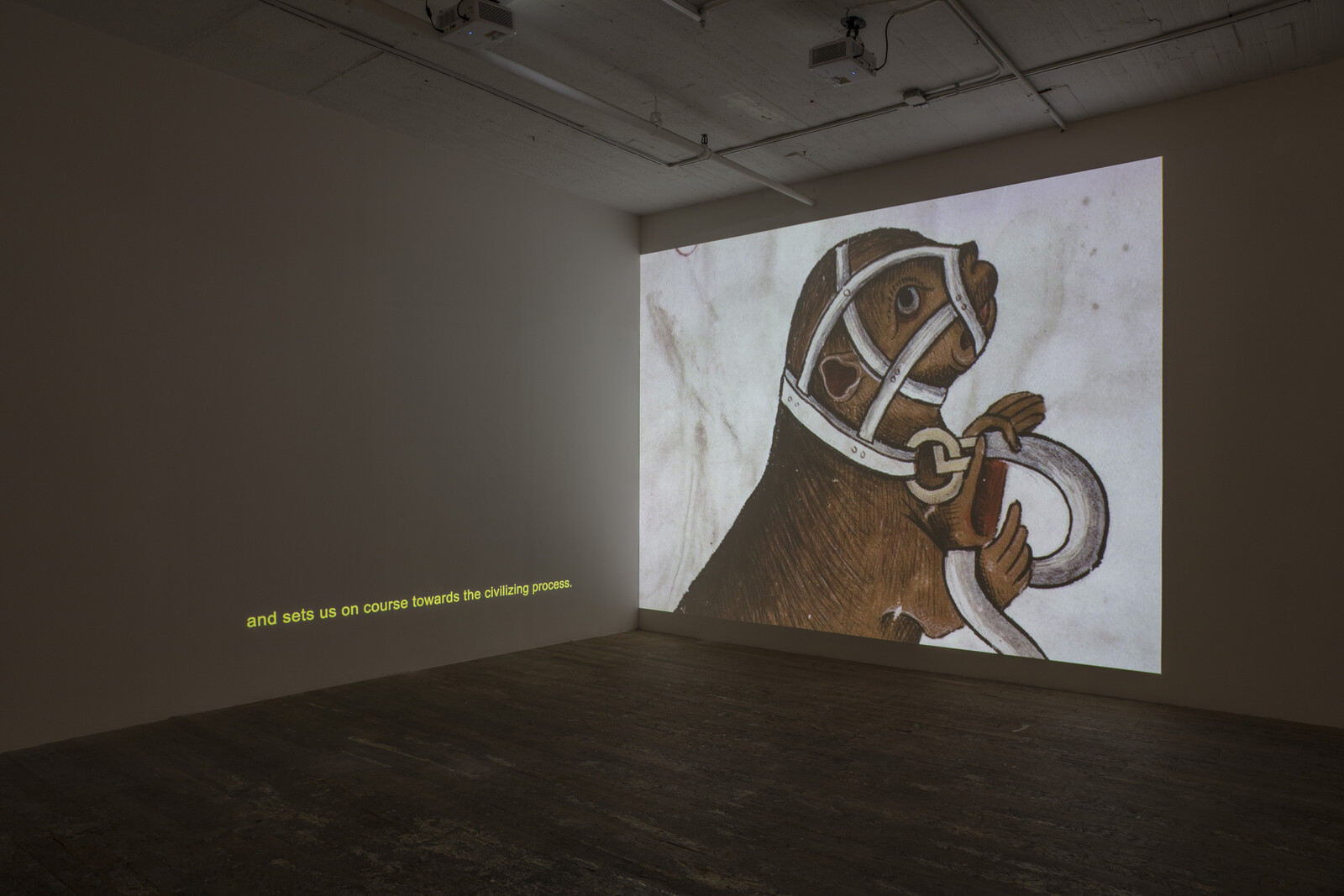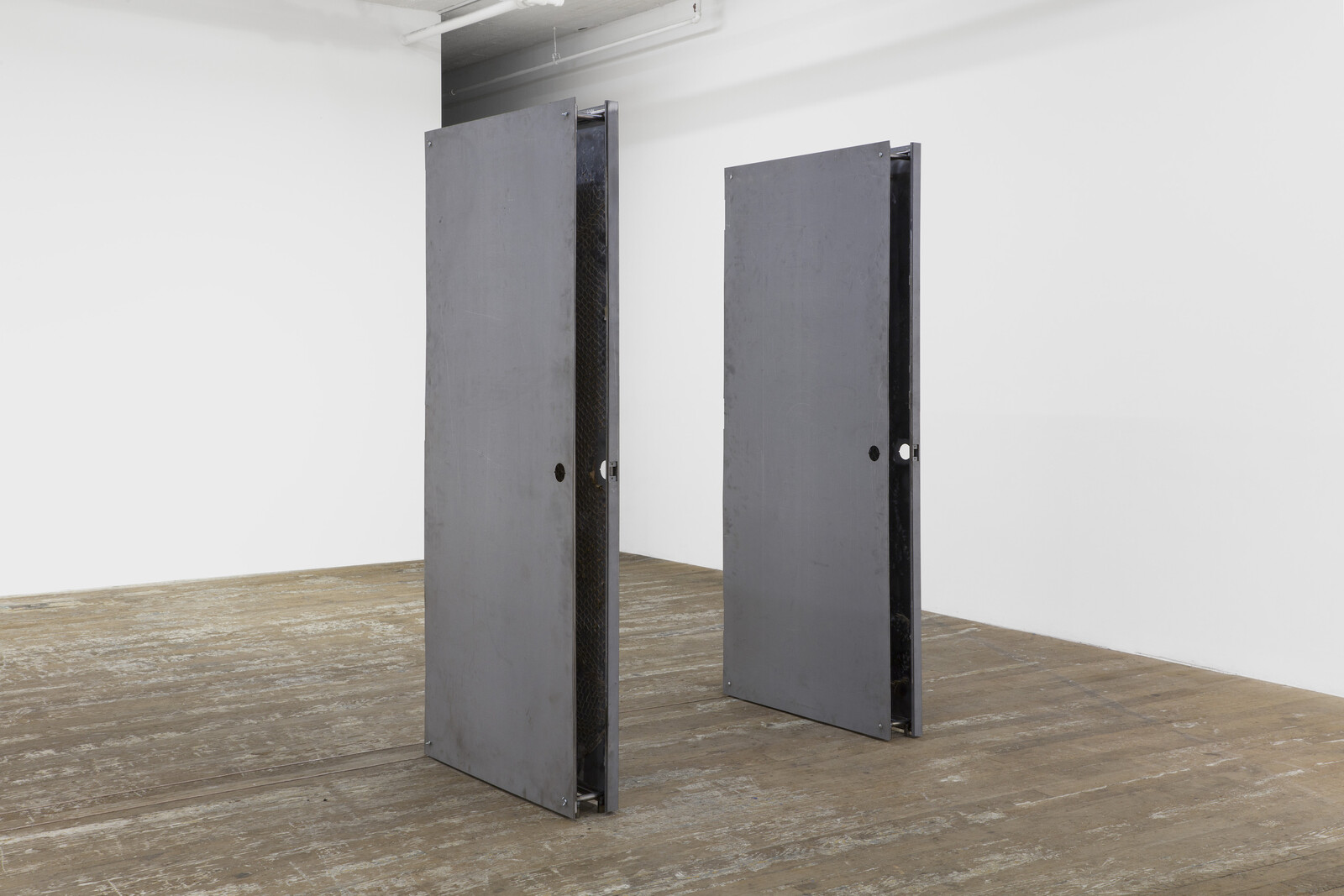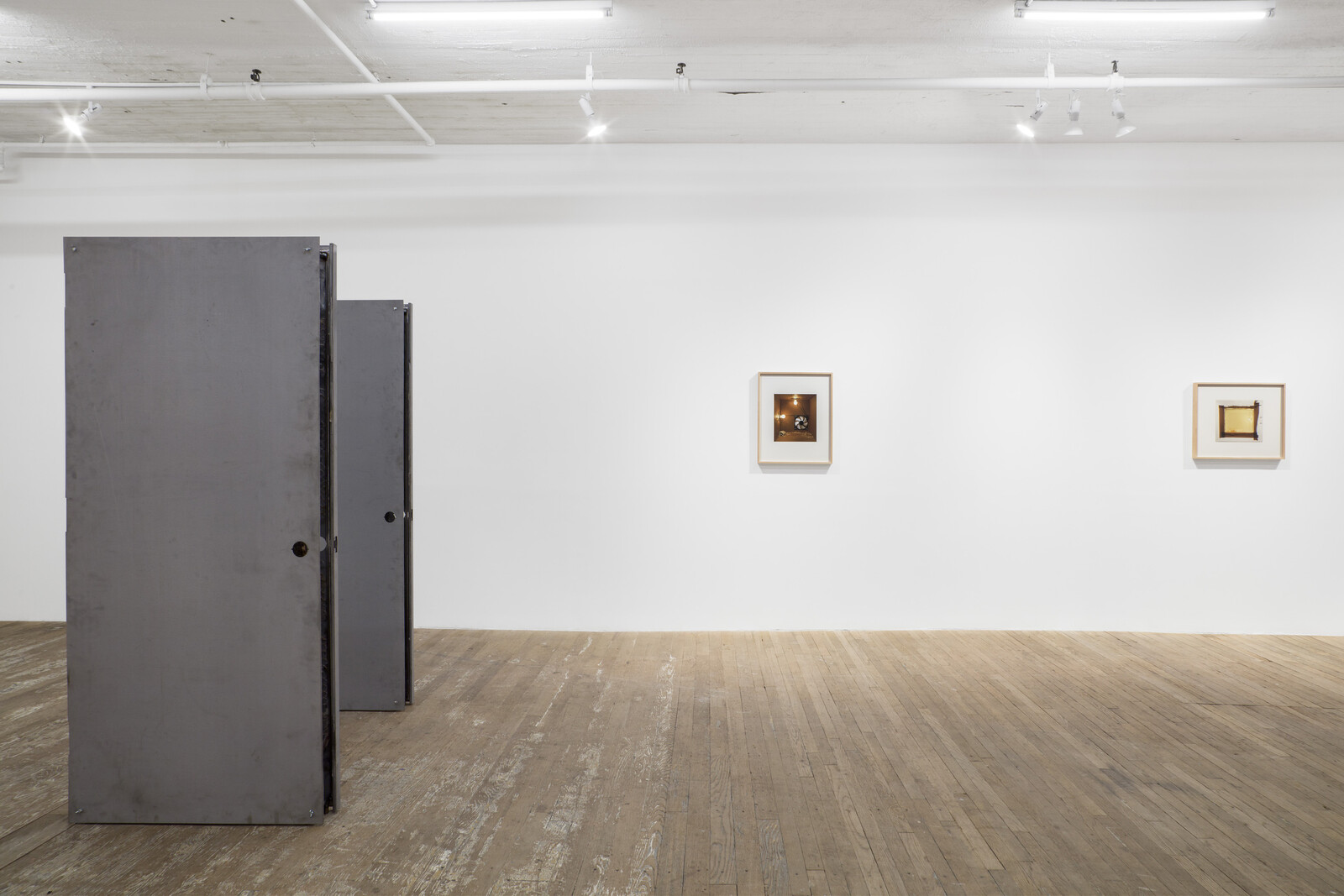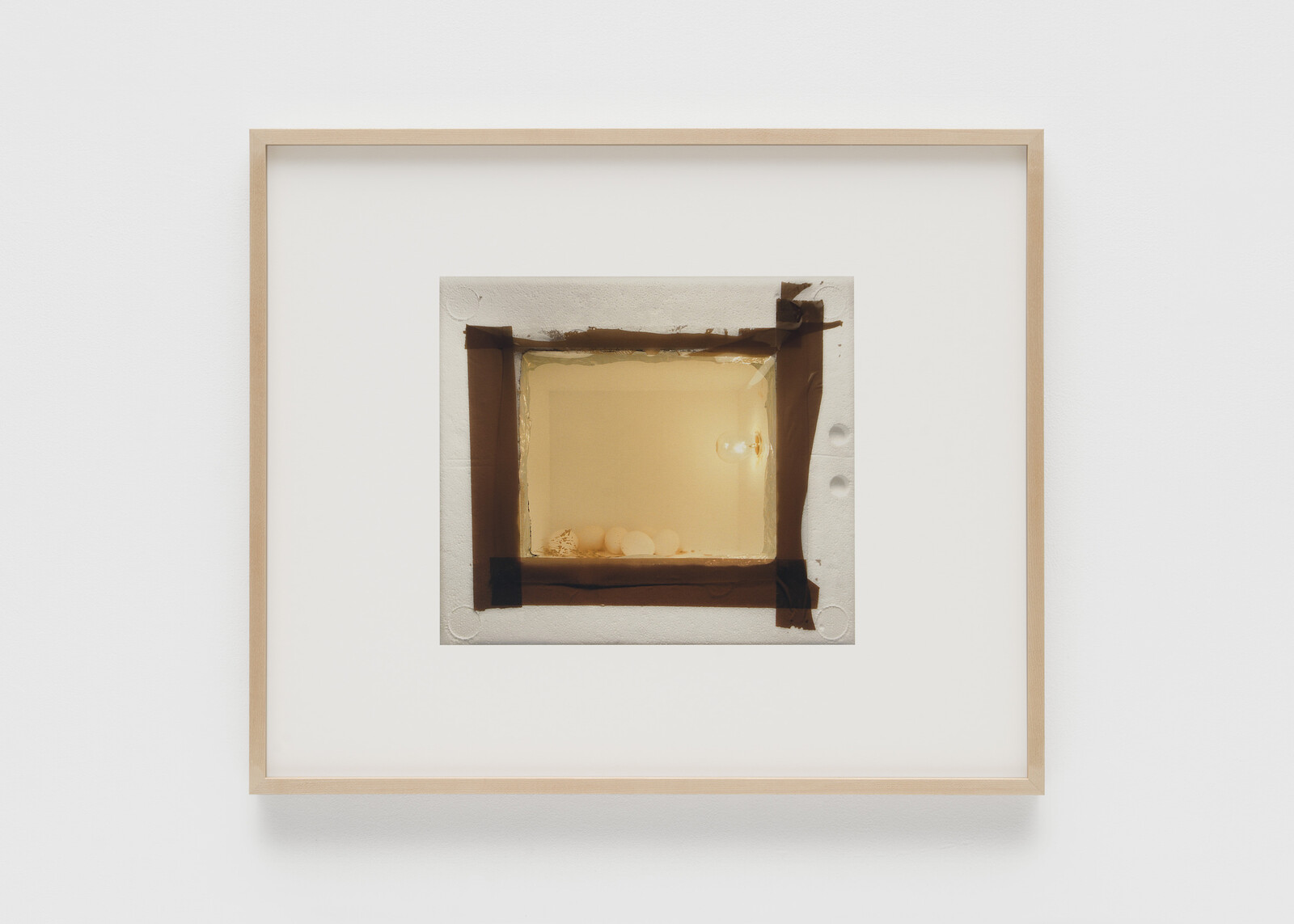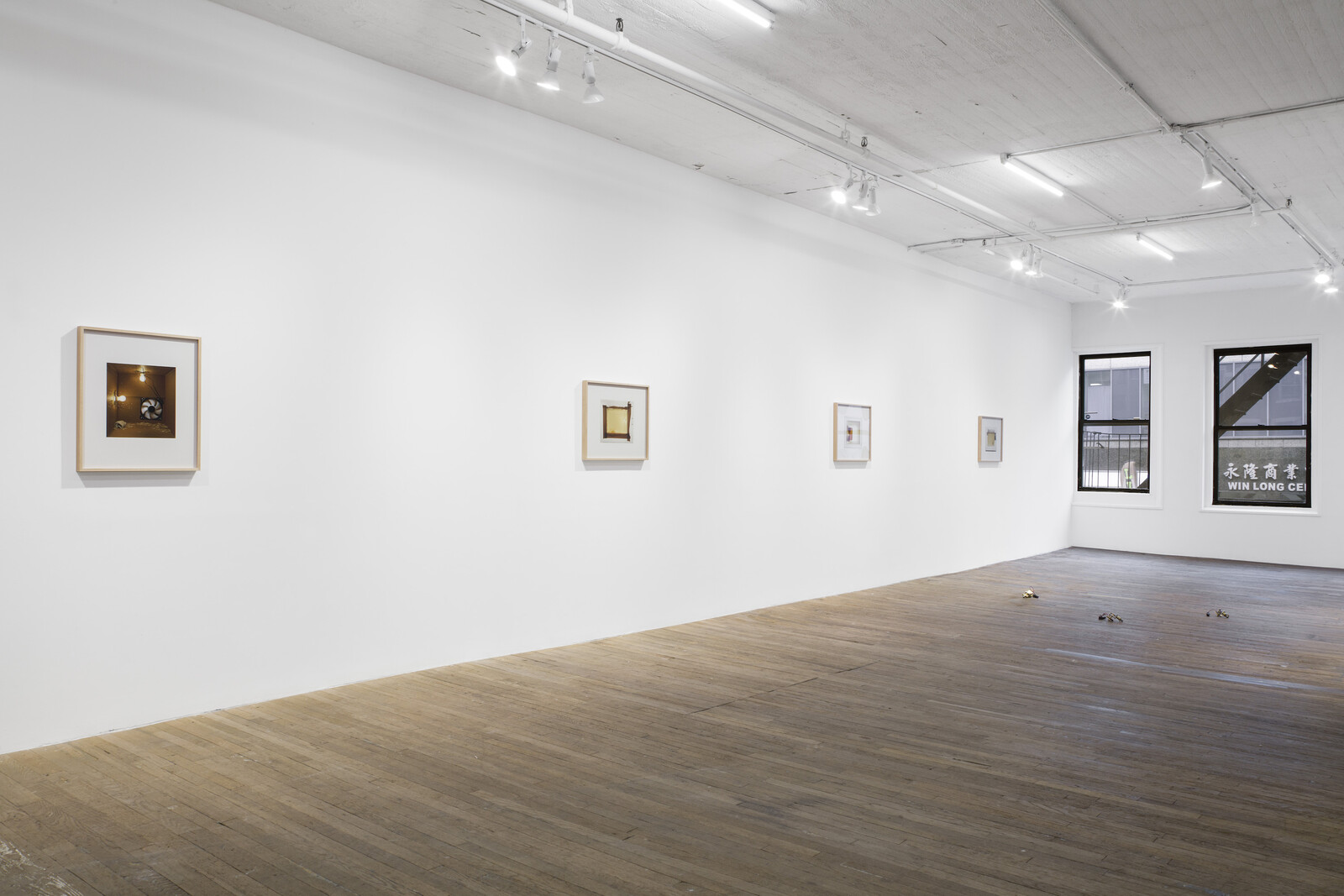There’s a card trick midway through Mary Helena Clark’s Neighboring Animals (all works 2024 unless otherwise stated), a two-channel video projected into a darkened corner. While an elderly orangutan watches from the other side of his enclosure’s window, two human hands press a single playing card against the thick safety glass. Holding a stick in one hand, the ape nimbly picks up the card, now (miraculously!) on his side of the barrier. After giving it a sniff and twirling it around in his hands, he places it back on the glass, tapping it a few times with his makeshift wand—perhaps his attempt to send it back through the seemingly porous window. Clark edited this video—a zoo’s promotional clip gone viral—to preserve some mystery on behalf of the orangutan, cutting the ending so that the card, instead of falling to the ground, remains affixed to the glass.
A collage of sampled footage, still pictures, medical scans, and her own camerawork, Neighboring Animals scrutinizes the thresholds between inside and outside, human and beast. The left channel consists solely of yellow subtitles with no corresponding voice, a pastiche of quotations on the topic of disgust. Alongside illustrations of chained and leashed animals from medieval bestiaries, we read: “That which reminds us we are animals elicits disgust. It serves to humanize our animal bodies and sets us on course towards the civilizing process.”1 Cut to a gnarly video, on the right-hand screen, of a possum receiving dental care. Mouths figure prominently, as visceral sites of mastication, ingestion, and attack, but also as conveyors of speech, sound, and emotion. “It is the most living part,” the captions read, quoting Georges Bataille, “the most terrifying for neighboring animals.”2 We see annotated bite marks, ultrasounds of a mouth enunciating words, X-ray footage of the artist swallowing, and a full set of extracted teeth, a grotesque smile without the jaw’s infrastructure. In one segment, a dizzying camera circles the gilded reliquary supposedly housing Mary Magdalene’s tooth—the personal made intensely public.
Clark is primarily known for her montaged films, but she has also produced sculptural installations with multichannel videos.3 Throughout her work, sound is often disassociated from, or out of sync with, its apparent source. The Glass Note (2018), not included in this exhibition, shows a close-up of a human throat paired to birdsong, for instance, while the sound piece Cholly’s Tinnitus (2018) infuses whatever gallery it is shown in with field recordings of whistling wind. In “Conveyor,” the video’s skittering piano and choral flourishes mix with the ambient noises produced by sound- and motion-activated sculptures to enliven the space and confuse the viewer.
At the beginning of the artist’s 2022 film, Exhibition, the camera slowly scans a grainy black-and-white newspaper photograph of a woman peering through the peepholes of Marcel Duchamp’s Étant donnés (1946–66). Instead of leaning in to look, Clark has us leaning in to listen with Monitors, a freestanding pair of unvarnished, hollowed-out, and reconstructed steel doors. By outfitting the doors with audio transducers, the artist transforms them into speakers that fill the space with chatter and laughter. Closer listening reveals the voices of spectators at a zoo. One deep, unimpressed voice rises above the din: “You’re boring.” It’s unsettling. Unseen and unheard, the observed animals are made present only by the exclamations and comments of passing visitors.
Nearby and underfoot, “Driver,” a trio of motorized deadbolts seemingly released from the doors, awkwardly fumble across the gallery floor. Clark has hacked these barrier-enforcers, turning them into limping mollusks with pulsing tongues that propel them forward as they slide in and out. The locks perform their intended mechanism in a constant, glitchy loop, but without fulfilling their functional duty. This freedom from utility makes them more human or bestial—sad and humorous, but also a bit repulsive.
Clark often relinquishes control of the camera’s eye to less authorial modes of image-making: medical probes, a flatbed scanner, eye-tracking software, a motion-triggered trail camera, or Google image search. “Brooder,” a series of six photographs of homemade egg incubators, are about as anonymous as can be—the type of pictures you might find illustrating DIY instructions on a homesteading website. Strangely compelling, they draw out the austere sculptural and architectural qualities of these claustrophobic containers that attempt to simulate natural conditions. With little to no evidence of life, aside from the cluster of eggs in Brooder 4, these artificial nests resemble vacated dioramas, prison cells, or even homespun bombs.
The conveyor of the exhibition’s title could be a communicator, like an artist, but it can also describe a transference from one place to another, as if through a threshold. The door, for Clark, represents both a wall and an invitation, a structure that withholds and protects but also provides access—like the orangutan’s window, the incubator’s aperture, or our own skin, which the artist frequently probes to show us views of our mysterious interiors. What happens, though, when the locks are disabled (or repurposed) and barriers are breached? As she hints throughout, boundaries are more porous than we might like to believe. The exhibition is filled with examples of how humans admire, mimic, and subjugate animals, often for our own benefit or amusement. Surrounded by the snickering and laughing, the oohs and aahs emanating from the steel doors, we may begin to empathize with the animals on display.
As she does with her visuals, Clark assembled the film’s text from various uncredited sources. Here, she appears to be pulling primarily from the writings of psychologist Paul Rozin.
Georges Bataille, “Mouth,” in Visions of Excess: Selected Writings, 1927-1939, ed. Allan Stoekl, trans. Allan Stoekl with Carl R. Lovitt and Donald M. Leslie Jr. (Minneapolis: University of Minnessota Press, 1985), 59.
In conjunction with the exhibition, Anthology Film Archives presented the two-night program, “Figure Minus Fact: The Films of Mary Helena Clark,” on February 24–25, 2024. The second night’s screening included a single-channel version of Neighboring Animals.
